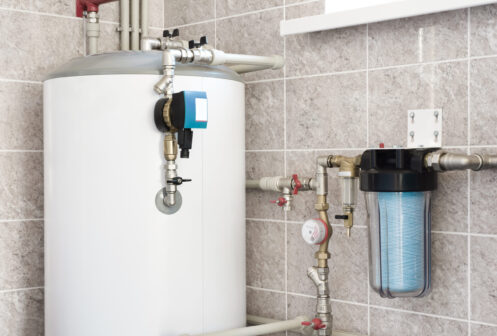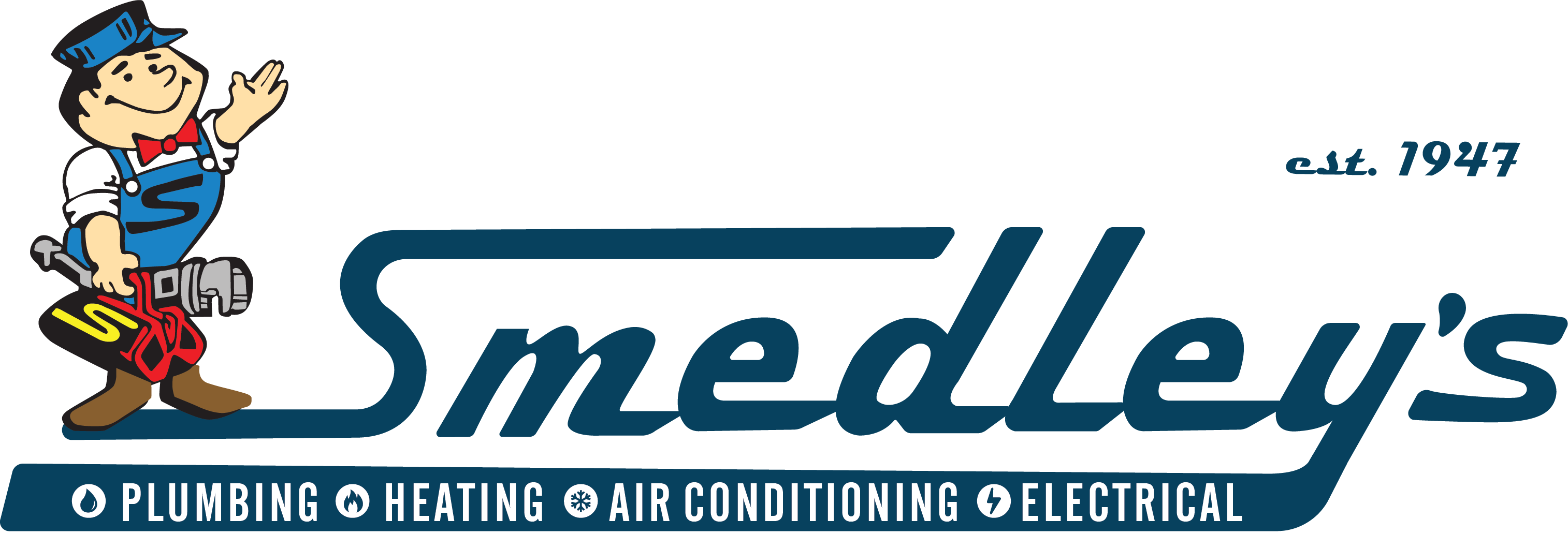
Water softeners have become increasingly popular in the past decade. As a homeowner, you may have heard of other people having a water softener but you might be unsure about its functions and why you would need one. In this article, we will help clear up any confusion and answer these questions and more.
Understanding Hard Water
Before we go over what a water softener is, it can be helpful to start by explaining what hard water is. The water in your home’s main water supply will have a hardiness rating. Some regions may have more challenging water than others. This hardiness rating is based on how many calcium and magnesium deposits are in the water.
All calcium deposits are measured in grains per gallon, or GPG for short. Water that has between zero and three GPG is considered soft. Water with a GPG of between three and a half and seven is classified as moderate. Water with a GPG of seven and a half or higher is considered hard water and should be treated with a water softener.
If you’re not sure what the hardness level of your water is, you can have a plumbing professional test it for you. However, other vital indicators can tell you if your water is hard. One of the most common is a white film buildup on your faucets and showerheads.
Why Is Hard Water Bad?
Having hard water supplied to your home is less than ideal. The high mineral content in this water will leave behind mineral deposits on all of your plumbing fixtures and appliances. Apart from requiring regular cleaning, these deposits can prematurely wear out your plumbing fixtures and appliances.
Bathing in hard water can lead to dry and itchy skin. Washing your clothes in hard water will fade much quicker as hard water removes coloring from fabrics. Additionally, you may notice that your clothes don’t get overly clean as the detergent can’t penetrate the deeper layers of your fabrics because of the limescale buildup on their surface layer.
What Is a Water Softener?
Now, since it has become clear that you want to have soft water in your home, a water softener comes into play. Water entering your home at your main supply valve will be directed into the water softener. This device will remove those harsh mineral deposits from the water before delivering the water to the various faucets throughout your home. Essentially, a water softener does just what its name entails. It softens your water.
How Does It Actually Work?
This whole-home water filtration system uses a unique process known as ion exchange. As water flows into the water softener tank, it must flow through a series of resin beads. Spherical in shape, these plastic beads are charged with a sodium ion. Overall, these beads have a negative charge. The mineral deposits in hard water, like calcium and magnesium, have a positive charge.
When the negatively charged resin beads come into contact with the positively charged mineral deposits in your water, they attract to one another. Once in the water, the mineral deposits are now attached to the resin beads instead. It allows the water to be turned from hard to soft.
The Main Components of a Water Softener
Each water softener is made up of three main components. These are a control valve, brine tank, and mineral tank. These components work in unison to remove mineral deposits from the water to create softer water for your household’s needs. Understanding how each component works can help you better understand investing in a water softener for your household.
Mineral Tank
The mineral tank is the main area where all the softening of the water takes place. A water supply line runs into the mineral tank and deposits hard water. As the water naturally filters down through the resin beads, its mineral deposits are removed. The now soft water flows from the mineral tank to the various faucets throughout your home.
Control Valve
The control valve is the brain behind a water softener. Its main job is to measure water flow into the mineral tank and stimulate the regeneration process when needed. The resin beads can only remove so many mineral deposits until they need to be regenerated.
The control valve will signal when this process must occur, thanks to predetermined intervals established by your plumbing professional. The regeneration intervals will differ for every household as they rely on many factors. Some of the most common include the number of people living in your house, the size of your home, and how hard your water is determined to be.
Brine Tank
Lastly, the brine tank starts the regeneration process for your resin beads. When looking at the water softener, the brine tank is the smaller of the two. This tank is filled with sodium pellets or blocks. Both will help introduce a high sodium concentration into the brine tank.
When the control valve signals that the ability of the resin beads to remove hard water deposits from the water is diminishing, the brine tank is emptied into the mineral tank. As the sodium water is flushed over the resin beads, it helps to charge the resin beads negatively. This way, they can actively attract unwanted mineral deposits to create soft water for your home. A drain pipe removes unwanted calcium and magnesium deposits from your water softener.
Do You Need a Water Softener?
A water softener can be an excellent investment for homeowners dealing with hard water. It’s been estimated that around 85 percent of American households are dealing with hard water. There’s a high probability that your home is too. You can benefit from a water softener if you notice hard water buildup.
It won’t take long until you notice a massive difference in many aspects of your home. First, you won’t have that consistent limescale buildup on your showerheads and plumbing fixtures. Second, your hair and body will feel smooth and hydrated. Third, your clothes will retain their colors for much longer and won’t feel as stiff. Even your drinking water may taste better.
Water Softener Maintenance
Like any other appliance in your household, your new water softener must undergo regular maintenance. Checking the softener’s salt level will be imperative to its operation. You’ll want to lift the lid on the brine tank every six to eight weeks and see how much salt is present. If you see water in the tank, add salt pellets until the salt is above the water level.
Call for Professional Installation Today
Looking for top-quality water softener installation services in Layton, UT? Look no further than Smedley Service! Since 1947, we’ve been serving the community with a wide range of HVAC and plumbing services, including furnace, boiler, and heat pump heating units, AC and ductless mini splits cooling systems, tank and tankless water heaters, pipe installation and repair, leak detection plumbing services, and indoor air quality solutions. Our experienced service technicians are always ready to help. To schedule your next appointment, contact Smedley Service office today!




